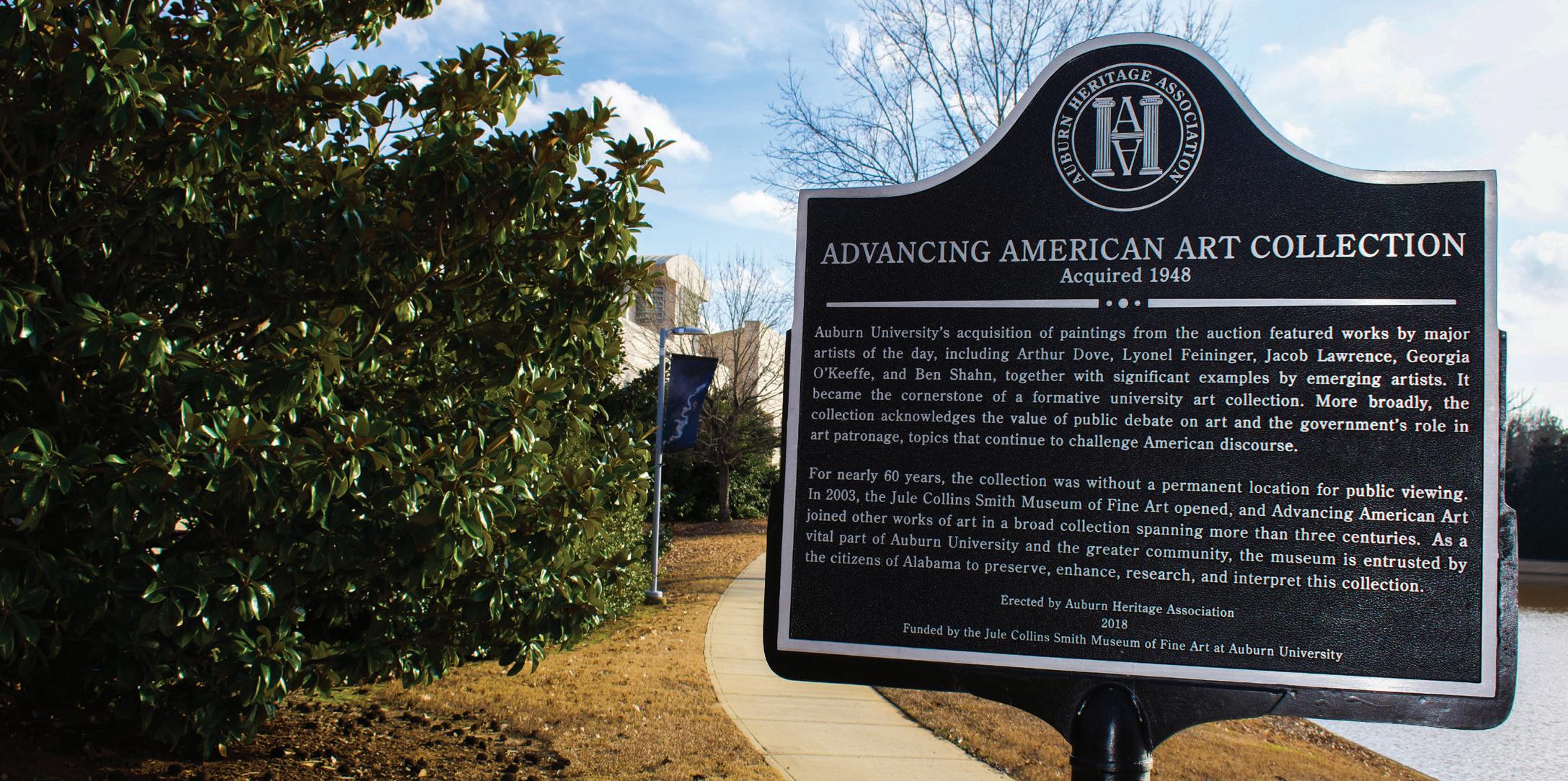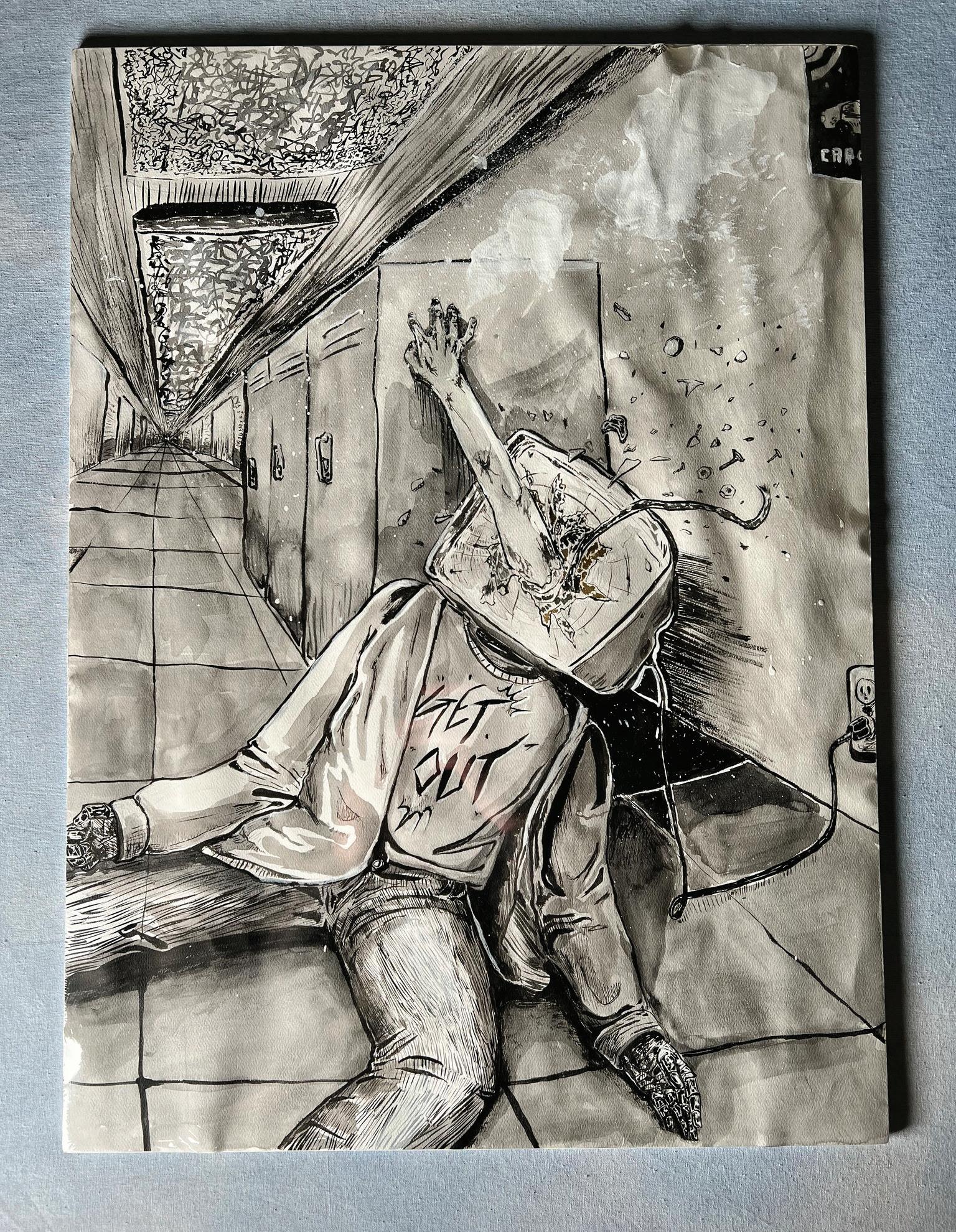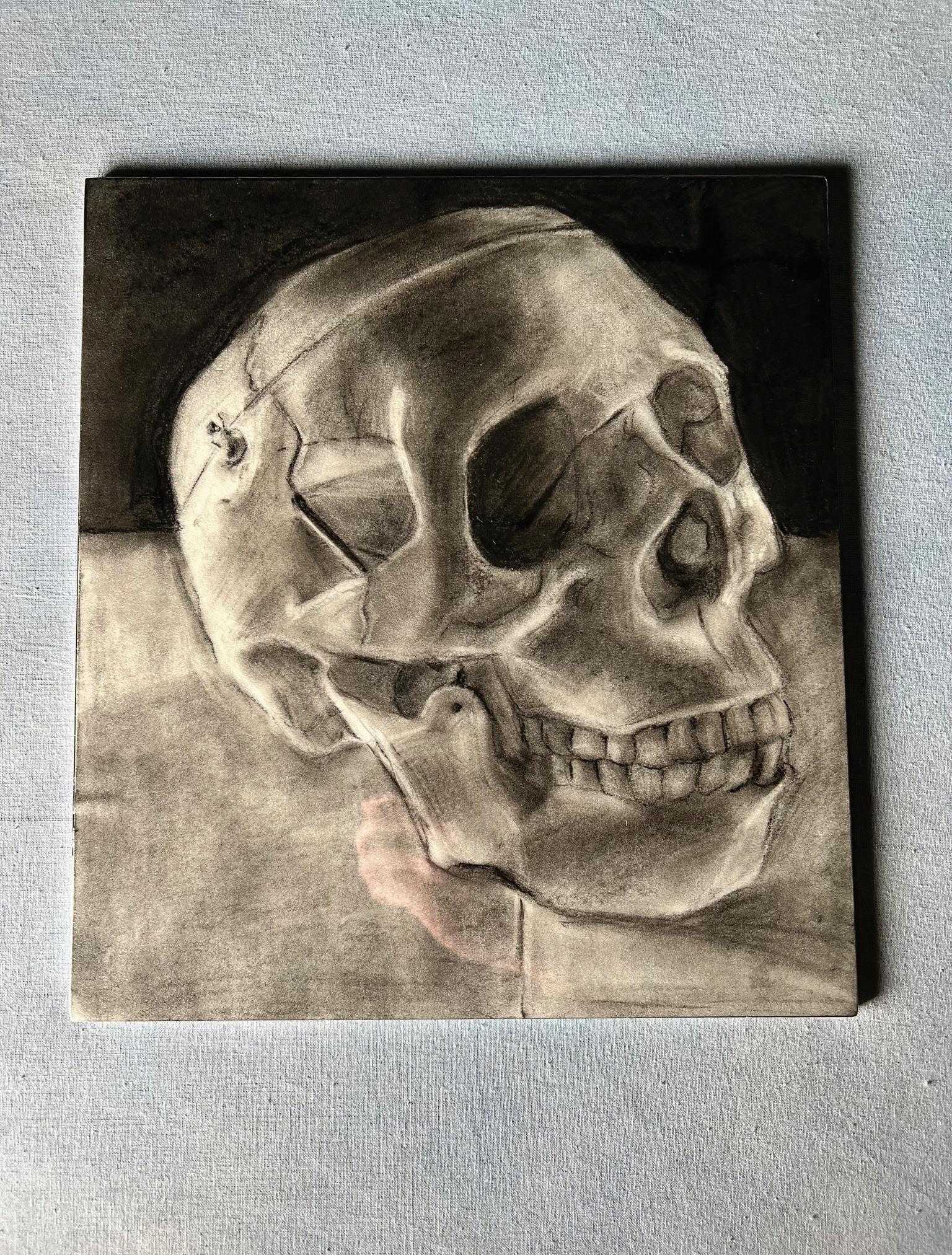
5 minute read
A ‘Jule’ In Auburn’s Crown
Story and Photos By Kendyl Hollingsworth
Everyone has their happy place. It might be your childhood home, a dock by the lake, the streets of a bustling city or anywhere with friends or family. It could even be a peaceful meadow you conjure up in your mind.
Advertisement
For me, I find my “happy” in art museums.
If there’s an art museum where I’m going, you can bet it’s on my list of places to visit. There’s just something about wandering through a quiet place where no one’s in a hurry. A place where you can stare at the wall for as long as your heart desires (I’m kidding — kind of). There’s always something new to see, something new to learn, something new to experience.
Alabama alone is full of impressive art museums, and luckily, there’s one right here in Auburn.
The Jule Collins Smith Museum of Fine Art is unique in that it’s directly affiliated with Auburn University. In fact, it’s the first accredited university art museum in the state. I’ve driven by it hundreds of times over the years, and it’s always a sight to see on South College Street heading toward campus.
“The Jule,” as it is affectionately called, will celebrate 20 years this October. Though the museum serves to educate and inspire the public at large, it maintains a close partnership with Auburn University, providing students and faculty a way to bring a cultural, artistic or historical lesson to life.
Recently, I paid a long-overdue visit to the museum to see what it had in store. For starters, the museum offers a permanent collection of works spanning six centuries, including standouts such as 19th-century prints by John James Audubon, European and American art dating back to the 1700s and several pieces from the “Advancing American Art” collection.
“While art of almost any genre and origin is of enormous value to The Jule’s mission, the intent as we grow the collection is to focus on a rounded representation and exploration of voices and interpretations in the southeastern United States, while also seeking to draw parallels to national and international communities,” the museum’s website reads.
As a lover of abstract art, some of my favorite pieces are those by Florence Neal and Maltby Sykes. I always find new details and new interpretations. In contrast, I admire the detail and color in Georgia O’Keeffe paintings and the Audubon prints.
According to the museum’s website, Overboard features nearly 250 sculptures of shoes in the likeness of the iconic Nike Air Jordan 5s. But instead of cloth or leather, Yoder used a wide range of discarded items to craft the shoes, inspired by Dr. Curtis Ebbesmeyer’s study of ocean currents — a study prompted by the 1990 loss of thousands of Nike shoes en route to the U.S. overseas. Each shoe is unique, and there’s even one that’s Auburn-themed. Peruse the shoes in the atrium and lobby until April 1.
Then there was the Kinsey collection. When I visited the museum in December, employees told me the collection was the largest of its kind, outside of the Smithsonian. The Jule housed just a fraction of it, though one could still easily spend hours going through it. gave his famed “I Have a Dream” speech. Each object on display evoked a sense of awe and wonder, and I learned so much in that visit.
On a beautiful day, it’s also worth walking the trail around the museum and looking at the unique art installations. One doubles as a bike rack, and another as a small playground. And while it’s gone now, I will always remember Alex Podesta’s “Self-Portrait as Bunnies” sticking out of the pond — a little alarming at first, but it gave me a chuckle each time I drove by.
A couple of exhibits I enjoyed in the fall were Andy Yoder’s “Overboard” — a collection of vibrant shoe sculptures — and the Kinsey African American Art & History Collection.
In their 50-year marriage, Bernard and Shirley Kinsey have collected a wide range of paintings, prints, flyers, sculptures and many more objects reflecting the history of African Americans — focusing mainly on their contributions, achievements and other important milestones dating back several hundred years. A couple pieces I still think about: a quilt handmade by one of the Gee’s Bend women of Wilcox County, Alabama, and a program from the March on Washington — when Martin Luther King Jr.
While the museum has bid farewell to several of its fall exhibitions, there are a few new exhibits that have recently debuted. The museum was closed from Dec. 31 to Jan. 23 for exhibit changeouts, and these new exhibits are set to be open for the next few months. Below are the descriptions of four of them, courtesy of The Jule.
Invisible Thread
Jan. 24 to May 7
Nearly 40 works by contemporary artists — with mediums spanning film, sculpture, painting, photography and performance — pose soul-searching questions to the viewer about our identities, beliefs and existence. Artists in this group exhibition include Lala Abaddon, Awol Erizku, Rachel Libeskind and Shikeith, among others, who express and explore physical and unseen ties to one another in this world and the next.
CLAY BODY – POTTERY & STONEWARE OF THE
Southeast
Jan. 24 to May 7
As distinctive as Alabama red clay, pottery and stoneware play a significant role in Southern culture. The 40-plus objects on view are gathered from the university art collection and private lenders. Despite their simplicity, advanced skill is evident. The maker’s creativity elevates functional objects and sheds light on the state and her people for more than 200 years.
KEVIN BRISCO – RADICAL NATURALISM: MIGRATORY ROOTS
Jan. 24 to Aug. 7
In 11 paintings created over the last three years, the Memphisborn artist examines the dubious nature of belonging and home for African Americans in his Blue Sky series. The environments he creates with human and plant life subjects convey a shared space, not a shared experience. Brisco’s selection of companion Audubon etchings addresses time’s fluidity — the effect over the years on an art object and our understanding of the 19th century artist.
MASAOMI YASUNAGA: IN HOLDING CLOSE
Jan. 24 to May 7
The artist’s conceptual approach differs from Eastern ceramic traditions and Alabama’s historical connections, as seen in Clay Body. Masaomi Yasunaga (Mah-sa-oh-me Ya-su-nah-ga) is a second-generation student of Sodeisha (so-DAY-shah), a postwar avant-garde movement. Translating to “Crawling through Mud Association,” the style counters simple forms used in daily Japanese life. With more than 40 sculptures, the exhibition showcases his ability to push what is possible. This is the artist’s first solo museum exhibition in the United States.
Next time you’re looking for something to do, or just need a quiet place to think, I hope you’ll consider stopping by The Jule. It’s sure to be an enriching experience.
The Jule Collins Smith Museum of Fine Art, located at 901 S. College St. in Auburn, is open Tuesday through Sunday from 10 a.m. to 4:30 p.m. Hours are extended to 8 p.m. on Thursdays. It observes all Auburn University holidays, as well as weather- and emergency-related closures. Admission is free, but donations are always welcome.
To learn more about The Jule, visit www.jcsm.auburn.edu.

Saturday, April 22 • 7:30 p.m.

Student Artist: Bethy Tameru

Grade Level: 12
Title: "Get Out"
Art Teacher: Randalyn Henry Auburn High School
Grade Level: 8
Title: "A Skull"

Art Teacher: Alana Whitehead
Auburn Junior High School










